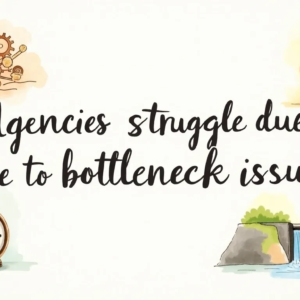Table of Contents
- What Are the 7 Ps of Marketing in Business
- How to Leverage Product to Stand Out
- Pricing Strategies to Boost Sales and Value
- Optimizing Place to Reach More Customers
- Promotion Tactics That Build Awareness and Trust
- People: Creating a Customer-Focused Team
- Streamlining Process for Better Service Delivery
- Using Physical Evidence to Build Credibility
- The History and Growth of the 7 Ps Model
- Real-Life Example: How HubSpot Uses the 7 Ps
- Why Every Business Should Use the 7 Ps Framework
- Keep Your Marketing Fresh by Reviewing the 7 Ps Regularly
The 7 Ps of marketing offer a solid framework for businesses to build and improve their strategies by focusing on Product, Price, Place, Promotion, People, Process, and Physical Evidence. Originally just four elements, it expanded to cover service and digital marketing needs better. Each P plays a unique role: from creating products that customers love to setting the right price and making the product easy to find. Plus, great customer service (People), smooth operations (Process), and trustworthy signs like packaging or testimonials (Physical Evidence) all boost confidence. When businesses smartly leverage these elements together, they improve their market presence and satisfy customers more effectively.
What Are the 7 Ps of Marketing in Business

The 7 Ps of marketing is a framework that helps businesses manage key elements influencing customer decisions and overall success. It started with the classic 4 Ps—Product, Price, Place, and Promotion—introduced by E. Jerome McCarthy. Later, Booms and Bitner expanded this model by adding People, Process, and Physical Evidence to better fit service-oriented industries. Each of these Ps represents an essential aspect businesses need to focus on. Product covers the goods or services created to meet customer needs. Price reflects the amount customers pay in exchange, impacting how a product is valued and perceived. Place deals with the channels and locations where customers can access the product, ensuring convenience and availability. Promotion includes all communication efforts like advertising and public relations that raise awareness and influence purchase decisions. People refers to everyone involved in delivering the product or service, including employees and customer support, whose interactions shape the customer experience. Process focuses on the systems and procedures that ensure consistent and efficient service delivery. Physical Evidence represents the tangible elements that support the service’s credibility, such as branding, packaging, or the appearance of a store or website. Together, these seven elements provide a comprehensive view for businesses to tailor their marketing strategies and create strong connections with their customers.
How to Leverage Product to Stand Out
To make your product truly stand out, focus on continuous innovation by actively incorporating customer feedback into your development process. This helps you refine features and stay aligned with what your audience values most. Creating clear unique selling propositions (USPs) that highlight how your product differs from competitors is key to capturing attention and building preference. Consider bundling complementary products or services to boost the perceived value and convenience for your customers, making your offer more compelling. Tailor product features to meet the needs of specific customer segments, increasing relevance and satisfaction. Regularly update your product’s design and functionality to keep it fresh and competitive in a fast-changing market. Using high-quality materials or advanced technology builds trust and enhances customer satisfaction, showing you prioritize excellence. Offering customization options can deepen customer engagement and loyalty by letting buyers feel the product is made just for them. Make sure your product positioning is clear and aligned with customer needs as well as market gaps, so your messaging resonates and connects. Before launching new ideas broadly, test them through pilot launches or limited editions to gather insights and reduce risk. Throughout your marketing, emphasize the benefits and problem-solving features of your product to demonstrate real value and make a strong connection with potential buyers.
- Focus on continuous innovation by incorporating customer feedback into product development.
- Create unique selling propositions that clearly differentiate your product from competitors.
- Bundle complementary products or services to increase perceived value and convenience.
- Tailor product features to suit specific customer segments for better relevance.
- Regularly update design and functionality to keep the product fresh and competitive.
- Use quality materials or technology to build trust and satisfaction.
- Offer customization options to enhance customer engagement and loyalty.
- Develop clear product positioning aligned with customer needs and market gaps.
- Test new ideas through pilot launches or limited editions before full release.
- Highlight benefits and problem-solving capabilities in marketing messages to connect with buyers.
Pricing Strategies to Boost Sales and Value
Pricing is more than just setting a number; it’s a powerful tool to influence sales and shape customer perception. One effective approach is dynamic pricing, where businesses adopt models like subscriptions, tiered pricing, or pay-as-you-go plans to cater to different customer needs and budgets. This flexibility helps reach broader audiences and encourages loyalty. It’s also crucial to analyze competitor pricing to position your product smartly within the market, ensuring you’re neither overpriced nor undervalued. Value-based pricing takes this further by aligning your price with the benefits customers perceive, which can justify a premium if your product delivers clear advantages. To boost purchase motivation, consider tactics like discounts, bundles, and seasonal offers—they not only increase volume but can also introduce customers to new products. Psychological pricing tricks, such as charm pricing (for example, pricing at $9.99 instead of $10), subtly sway buying decisions by making prices feel more attractive. Testing different price points through A/B testing allows you to find the sweet spot that maximizes revenue without turning customers away. Transparency in pricing builds trust, helping reduce hesitation and abandoned carts. Be ready to adjust prices based on demand shifts, inventory status, or market trends to stay competitive and profitable. Regularly monitor your margins to ensure pricing strategies support your business goals. When paired thoughtfully with promotions, pricing can drive sales growth while maintaining your brand’s value and reputation.
Optimizing Place to Reach More Customers

Expanding your distribution channels is key to reaching more customers today. Don’t rely solely on one method—include online marketplaces, retail stores, mobile apps, and direct sales to cover all bases. Use data analytics to discover where your customers prefer to shop and adjust your channels accordingly. Partnering with distributors, resellers, or popular marketplaces can boost access and convenience for buyers. An omnichannel approach helps create smooth shopping experiences across different platforms, letting customers switch between online and offline without hassle. Efficient inventory management is crucial to avoid stockouts or excess stock, which can hurt sales and cash flow. Also, optimizing logistics and delivery speeds cuts costs and keeps customers happy. Localizing your distribution strategies to fit specific geographic or cultural preferences makes your product more appealing in diverse markets. Before rolling out new channels fully, test them on a smaller scale to reduce risk. Technology like CRM and ERP systems is invaluable for tracking and managing all place-related activities. Finally, working with partners on co-marketing efforts can open doors to untapped customer segments and expand your reach faster.
Promotion Tactics That Build Awareness and Trust
A strong promotion strategy combines paid advertising, owned media, and earned media to create a balanced mix that reaches and resonates with your audience. Content marketing plays a key role here—blogs, videos, and webinars help educate and engage potential customers, building trust over time. Social media platforms offer a direct line to your audience, allowing brands to share their story and interact personally, which humanizes your business. Partnering with influencers and industry experts can amplify your reach and boost credibility, especially when their followers see their endorsement as genuine. Personalizing your promotional messages using customer data increases relevance and response rates, making your campaigns feel tailored rather than generic. If you’re using AI to generate messages, AI humanizers take this a step further by refining tone and language to make automated messages sound more natural, empathetic, and human. To stay compliant with data privacy regulations, be sure to use a CCPA solution when implementing these strategies. Targeted campaigns based on specific customer segments, behaviors, or lifecycle stages ensure that you deliver the right message at the right time. Additionally, tools that let you edit PDF content can make it easier to customize and update campaign assets like brochures or proposals, without needing complex design software. SEO investment is essential to improve organic visibility, bringing in users actively searching for what you offer without ongoing ad spend. Hosting events, webinars, or workshops builds community and trust by offering real value and face-to-face interaction, even if virtual. Email marketing remains a powerful tool for nurturing leads and keeping customers engaged with personalized content and offers. Finally, measuring the effectiveness of your promotion efforts allows you to continually adjust and optimize your strategy, ensuring every dollar spent moves the needle toward greater awareness and stronger customer relationships.
People: Creating a Customer-Focused Team
The People element in the 7 Ps is all about building a team that truly puts customers first. Hiring employees who share your company’s values and understand the importance of excellent customer service sets the foundation. But it doesn’t stop there — ongoing training is key to keep everyone sharp on product knowledge, communication skills, and problem-solving. When your team feels confident and informed, they can better serve your customers. Creating a culture centered around customer satisfaction encourages continuous improvement and motivates employees to go the extra mile. Empowering frontline staff to make decisions gives them the freedom to resolve issues quickly and personalize the experience, which customers really appreciate. Teamwork also plays a big role; when departments collaborate smoothly, customers enjoy seamless service from start to finish. Recognizing and rewarding employees who consistently exceed expectations helps maintain high morale and reinforces the customer-first mindset. Listening to feedback from both customers and staff can highlight areas where your team might need more support or resources. Keeping communication open between management and employees ensures problems are addressed promptly and ideas for improvement flow freely. Technology tools, like CRM systems or knowledge bases, can back up your team by providing quick access to information and tracking customer interactions. Finally, promoting diversity and inclusion within your workforce not only reflects your customer base but also broadens perspectives, leading to more empathetic and effective service. All these steps together create a customer-focused team that drives loyalty and business growth.
Streamlining Process for Better Service Delivery
To boost service delivery, start by mapping out every customer journey touchpoint to spot bottlenecks and inefficiencies. Automating repetitive tasks not only speeds things up but also reduces human errors, making the process smoother. Wherever possible, standardize procedures to maintain consistent quality and set clear expectations. Listening to customer feedback is crucial—it helps refine and simplify processes so they better meet real needs. Training employees on these improvements and encouraging their ideas can uncover hidden opportunities for optimization. Integrating technology platforms ensures seamless data flow and communication between teams, cutting down delays and missteps. Keep an eye on key performance indicators like process efficiency and customer satisfaction to measure success and identify areas for change. Flexibility is key, too: processes should adapt to different customer situations to provide personalized experiences without sacrificing speed. Before rolling out major changes, test them in controlled settings to avoid disruptions. Finally, clearly documenting processes supports effective training and holds everyone accountable, creating a solid foundation for consistent, high-quality service delivery.
Using Physical Evidence to Build Credibility
Physical evidence plays a vital role in building trust and credibility with your customers, especially when your product or service is intangible. Start by maintaining consistent branding across all customer touchpoints, including your logo, colors, and messaging. This creates a cohesive and professional impression that customers recognize and trust. The design of your physical spaces—whether it’s a store, office, or kiosk—should reflect your brand values and make customers feel comfortable and confident. High-quality packaging is another key element; it not only protects your product but also enhances first impressions by showcasing attention to detail. Displaying testimonials, reviews, and case studies prominently offers social proof that reassures potential buyers about your reliability and expertise. Certifications, awards, and accreditations should be showcased as well, as they provide external validation of your skills and standards. Your website and digital platforms should have a clean, professional design that’s easy to navigate, with clear contact information and accessible support resources to encourage customer engagement. Uniforms or badges for your staff contribute to a professional appearance, reinforcing trust during face-to-face interactions. Don’t forget printed materials like brochures and business cards, which can reinforce your brand identity and provide tangible reminders of your business. Finally, keep all physical evidence up to date and aligned with current marketing campaigns to ensure consistency and relevance. For example, a well-branded retail store with polished packaging and visible customer testimonials can make a huge difference in a shopper’s decision to buy, turning physical evidence into a powerful trust-building tool.
The History and Growth of the 7 Ps Model
The marketing mix began as the 4 Ps—Product, Price, Place, and Promotion—introduced by E. Jerome McCarthy in 1960. This simple framework helped businesses focus on key areas to attract and satisfy customers. However, as markets evolved, especially with the rise of service industries, it became clear that this model didn’t fully capture the complexities of marketing intangible offerings. In the 1980s, Booms and Bitner expanded the framework by adding People, Process, and Physical Evidence. These additions recognized that services rely heavily on human interaction, operational flow, and tangible cues to build trust and credibility. Over the years, the 7 Ps model has adapted further to keep pace with digital transformation and multichannel marketing strategies. For example, businesses now must consider how online platforms, automated processes, and virtual experiences fit into each P. Some marketers even propose an eighth P, Partners, to highlight the importance of strategic alliances and collaborations in today’s interconnected markets. What makes the 7 Ps framework valuable is its flexibility—it works across industries and business sizes, providing a balanced view that combines both tangible products and intangible experiences. It also integrates smoothly with other tools like SWOT analysis and market segmentation, helping businesses create well-rounded marketing plans. The evolution of the model reflects shifting customer expectations, technological advances, and changing market dynamics, yet it remains a fundamental teaching tool and practical guide for marketing strategy worldwide.
Real-Life Example: How HubSpot Uses the 7 Ps
HubSpot is a great example of how to effectively apply the 7 Ps of marketing in a real-world business. Its product is an all-in-one platform that combines marketing, sales, customer service, and CRM tools, providing a seamless experience that supports business growth. For pricing, HubSpot uses a scalable subscription SaaS model with tiered plans based on the number of users and database size, which gives customers flexibility as they grow. Since HubSpot’s platform is entirely cloud-based, it offers global access, complemented by local user communities and support networks that enhance user engagement. When it comes to promotion, HubSpot leans heavily on content marketing, SEO, webinars, and speaking engagements, positioning itself as a thought leader and educating potential customers rather than just selling. The company invests significantly in its people, especially customer success teams and online support, ensuring users get the help they need quickly and effectively. HubSpot’s process is streamlined, with onboarding and sales involving multiple departments working closely together to provide a smooth customer journey. The physical evidence of HubSpot’s brand is clear through consistent, professional design across all digital platforms, building trust and credibility. Moreover, HubSpot partners with major platforms like Facebook and Google, as well as regional businesses, to expand integrations and outreach, strengthening its ecosystem. What sets HubSpot apart is their use of data-driven decision-making to regularly optimize each P, ensuring their marketing mix stays relevant and effective. This integrated and strategic approach helps HubSpot maintain its leadership position in a competitive market while keeping customers satisfied and engaged.
Why Every Business Should Use the 7 Ps Framework
The 7 Ps framework covers every essential part of marketing—from Product and Price to People and Physical Evidence—giving businesses a full picture to build smart strategies. When companies use this model, they avoid missing critical pieces that could weaken their marketing efforts. It pushes businesses to innovate and constantly improve by keeping customer needs front and center. For example, pricing decisions become clearer and more competitive when you consider how your product features and distribution channels fit together. Understanding Place helps you get your product where customers want it, making buying easier and boosting sales. Promotion becomes more effective because messaging aligns across all platforms, creating a consistent brand voice. Plus, putting People—your employees and customer service teams—at the heart of your approach strengthens customer loyalty and experience. Streamlining Process means your service is delivered smoothly every time, cutting down mistakes and keeping customers happy. Physical Evidence adds trust through things like strong branding, packaging, and real customer testimonials, which is especially important for service-based businesses. The best part is that this framework works for businesses of every size and industry, whether you’re a startup figuring things out or a large company refining complex strategies. Using the 7 Ps helps you balance all these moving parts into one cohesive marketing plan that really connects with your audience and drives growth.
Keep Your Marketing Fresh by Reviewing the 7 Ps Regularly
To keep your marketing strategy sharp and effective, it’s essential to regularly revisit each of the 7 Ps. Start with your Product features and services—listen closely to customer feedback and track market trends to refine what you offer. When it comes to Price, don’t be afraid to rethink your approach; experimenting with subscriptions or tiered pricing can open new revenue streams and keep you competitive. Place strategies also need a fresh look: explore new distribution channels, optimize your inventory, and make sure your product is as accessible as possible. Promotion is always evolving, so updating your tactics by using emerging media platforms, teaming up with influencers, or creating personalized campaigns can boost engagement. People are at the heart of your business, so regularly assess staff training, customer service quality, and team morale to keep customer interactions positive and meaningful. Processes behind the scenes should be streamlined to eliminate bottlenecks and enhance automation, ensuring customers experience smooth service every time. Don’t overlook Physical Evidence like branding consistency, packaging, and your digital presence—these tangible cues build trust and credibility. Using data and analytics across all these areas helps you measure what’s working and spot where adjustments are needed. Market conditions, technology, and customer preferences change fast, so adapting the 7 Ps to reflect these shifts is crucial. Bringing together teams from different departments during your review helps gather diverse insights and creates a more coordinated marketing approach. This ongoing cycle of evaluation and improvement keeps your marketing fresh and aligned with your business goals.
Frequently Asked Questions
1. What exactly are the 7 Ps of marketing and why should businesses focus on them?
The 7 Ps of marketing include Product, Place, Promotion, People, Process, Physical Evidence, and Performance. They cover all the key areas of marketing beyond just the product itself, helping businesses create a balanced and effective marketing strategy that addresses customer needs and stands out in the market.
2. How can understanding the ‘People’ aspect improve my marketing efforts?
The ‘People’ component focuses on everyone involved in the business, from employees to customers. By understanding and training your team to deliver excellent service, and by really knowing your customers’ needs and behaviors, you can create stronger relationships and a better overall experience that boosts loyalty and growth.
3. In what ways can ‘Process’ impact customer satisfaction and brand reputation?
Process refers to the methods and workflows businesses use to deliver their products or services. Streamlining and optimizing these processes can lead to faster service, fewer mistakes, and a smoother customer journey, which directly improves satisfaction and builds a positive brand reputation over time.
4. Why is ‘Physical Evidence’ important even for businesses that operate mostly online?
Physical Evidence means the tangible cues that reassure customers about your brand, like packaging, website design, or even email formats. For online businesses, this helps build trust and professionalism, making customers feel confident about purchasing even without physically touching the product.
5. How can a business effectively leverage ‘Place’ to reach the right customers?
Place refers to where and how you deliver your product or service to customers. By carefully choosing the right channels, whether physical stores, online platforms, or partnerships, and ensuring ease of access, businesses can get their offerings in front of the right people at the right time, boosting convenience and sales.
TL;DR The 7 Ps of marketing—Product, Price, Place, Promotion, People, Process, and Physical Evidence—offer a solid framework for businesses to build strong marketing strategies. Each element plays a key role: from creating a standout product and smart pricing to making sure your team and processes deliver great service. Using the 7 Ps helps you reach more customers, build trust, and stay competitive. Real-world examples like HubSpot show how this model works in practice. Regularly reviewing and adapting these Ps keeps your marketing fresh and aligned with customer needs in today’s digital world.





















